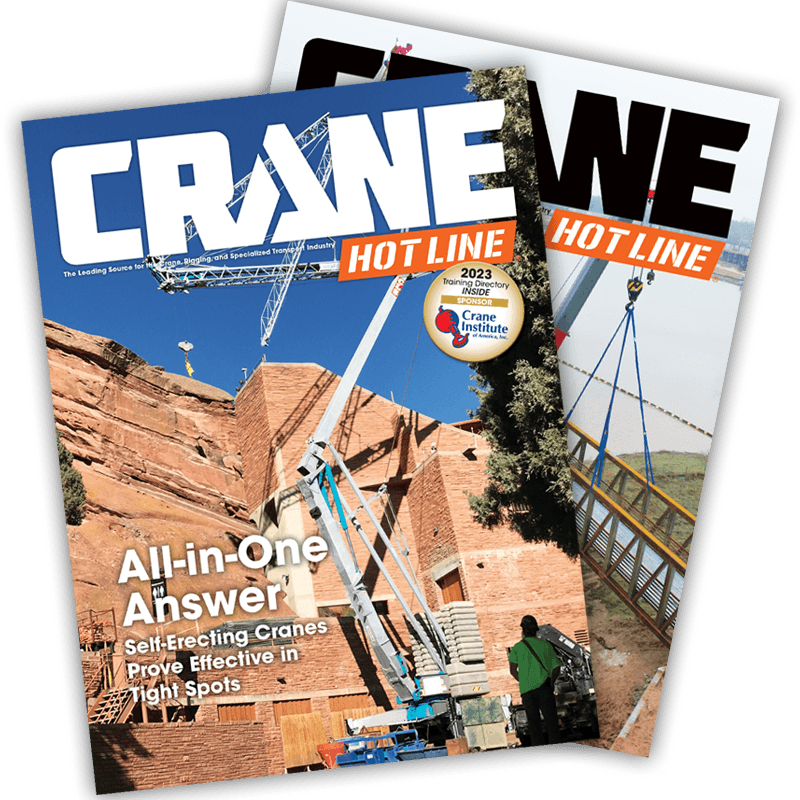|

|
|
Kirk Zander |
Kirk Zander is the field sales manager for Manitou North America, Inc., Waco, Texas. He has been with the company since 1999, when he started is career as the Midwest Regional Manager.
February 21, 2007 • A rotating telescopic handler is a 3-in-1 telescopic handler that rotates and can also be converted into a personnel lift or light duty rough terrain crane all within minutes. While it took some time for the concept to catch on, today's global market is estimated to be 2,000 units, with Europe consuming the bulk of them.
The first rotating telescopic handler was produced by an Italian manufacturer called Merlo. They exhibited the Roto2511XS at the Samoter show in Italy in 1991. This was an 11-meter unit with 2.5 metric ton capacity. In 1993 MCI, a subsidiary of ManitouBF, introduced the MRT1540, a 15-meter, 4-metric ton rotating telescopic handler. Since then the race has been on to raise the bar, literally. Today, there are four manufacturers of rotating telescopic handlers, all with roots in Italy: Manitou, Merlo, Dieci, and Terex.
There are several reasons why rotating telescopic handlers have met with such success in Europe but have been slower to break into other markets. In Europe there is limited space on jobsites; the cost of labor is high; and there are stiff safety restrictions. In addition, the concept was pioneered. To these points, I believe most U.S. contractors would agree that limited space is also an issue on jobsites here. Additionally, labor costs are not going anywhere but up. European regulations have contributed to the success of these machines, as they tend to impose stricter regulations when technology provides a safer way to do the job. But safety is something that everyone who works in construction should be evermore mindful of, no matter what continent you are on.
Rotating telehandlers have only been marketed in the United States since 2000. During the 11 years that Europeans had a jump on the concept, strong independent dealers were largely responsible for pioneering the market penetration. These dealers have historically had an interest in developing niche concepts. Conversely, by the year 2000 national rental companies in the United States, who have demonstrated no appetite for pioneering new concepts, were in a frenzy purchasing independent equipment companies therefore becoming the driving force of telescopic hander purchases in the U.S. This left rotating telescopic handler manufacturers without a network to establish the product's place in the market.
However, remaining independent dealers have been successful with roto-telehandlers. Through continued development and new technology these units are quite user friendly, with a good number of them now being placed in dealer rental fleets. This is a major step for the product in the United States given its preference for renting telescopic handlers. Rentals allow contractors to see the benefits of the unit without forking out too much money up front. Often after a unit has been rented by a contractor for four to six months, job foremen have realized the benefits of rotation and don't want to return the rental machine. Among the tangible benefits they have cited include time savings, reduced number of crane rentals needed due to the variety of jibs and winches available, and unmatched maneuverability. Mike Rohr of GMR Builders in Canton, Ohio, owns one Manitou MRT model and would like to buy a second unit. While at the World of Concrete show last month in Las Vegas, he commented that the machine is so efficient his crews constantly fight over the one rotating telehandler that they have.
Consider all the features and benefits of a rotating telescopic handler. The machines start with the rotating feature combined with unparalleled lift heights, good capacities, and a wide range of attachments. Units are fitted with a load moment indicator, like a crane, which tells operators when they are approaching maximum capacity. The device provides this information by reading and displaying the lift height, forward reach, degree of rotation, weight of load lifted, and the position of the outriggers to calculate what the unit is capable of lifting at that position. It might sound complicated but the operator of an MRT machine only needs to select which attachment is on the unit on a screen in the cab.
Likewise, it is the wide variety of attachments that make rotating telehandlers so desirable. When using forks, material is more easily lifted and placed at heights because if the operator is not perfectly lined up, the unit can be rotated to safely land the load. Utilizing a variety of jibs and winches provides the contractor with the ability to set trusses, I-beams, panels, or glass, for example, without having to rent a crane. This can be a huge time and cost savings. What the rotating telescopic handler lacks in capacity compared to most cranes, it makes up for with its rough terrain capability allowing it to get closer to the site therefore eliminating the need for greater capacity.
Last but not least are the work platforms that act to convert the unit into a personnel lift. The patented extendable work platforms on Manitou's MRT range vary in capacity from 880 to 2,200 pounds with widths up to 16'3”. Other platforms include the aerial jib platform and a 3D Rotating Pendulum Basket providing either below grade reach to 35 feet or another 40 eet up when placed into the positive position. The rotating telescopic handler is truly a unique product.
Whether your job is in construction, steel erection, crane rental, demolition, plant maintenance, quarry or civil work, roadwork, industrial handling or the waste industry, a rotating telescopic handler might just be the right solution for you.



